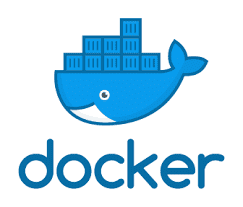Implement runtime environment variables with Docker and React app
March 25, 2021
Goal
We want to be able to run our React application as a Docker container that is built once, it runs everywhere by being configurable during runtime.
Problem
React is a traditional client-side framework, they run in the browser, and there is no such thing as environment variables inside the browser environment.
In a React application, there’s a .env file that contains environment variables that are used as process.env just like we use environment variables inside Node.js. The object process does not exist inside the browser environment, it’s Node-specific. During transpiling, the Webpack process replaces all occurrences of process.env with a string value that was given. This means it can only be configured during build time.
Solution
The specific moment when it is still possible to inject environment variables happens when we start our container. Then we can read environment variables from inside the container.
We can write them into a file and it’s imported into our application using <script> tag inside the head section of index.html. So at that moment, we run a bash script which creates JavaScript file with environment variables assigned as properties of the global window object. Injected to be globally available within our application the browser way.
Implement
The env.sh is a small bash script that will read .env files (production, staging, dev or test) and write them into a file. If you set an environment variable inside the container, its value will be used, otherwise, it will fall back to the default value from .env file. It will create a JavaScript file that puts environment variable values as an object which is assigned as a property of window object.
#!/bin/bash
# Recreate config file
rm -rf ./env-config.js
touch ./env-config.js
ENV_FILE=".env"
# Add assignment
echo "window._env_ = {" >> ./env-config.js
# Read each line in .env file
# Each line represents key=value pairs
while read -r line || [[ -n "$line" ]];
do
# Split env variables by character `=`
if printf '%s\n' "$line" | grep -q -e '=';
then
varname=$(printf '%s\n' "$line" | sed -e 's/=.*//')
varvalue=$(printf '%s\n' "$line" | sed -e 's/^[^=]*=//')
fi
# skip if it's a comment line (#)
if [ ${varname:0:1} == '#' ]
then break
fi
# Read value of current variable if exists as Environment variable
value=$(printf '%s\n' "${!varname}")
# Otherwise use value from .env file
[[ -z $value ]] && value=${varvalue}
# Append configuration property to JS file
echo " $varname: '$value'," >> ./env-config.js
done < $ENV_FILE
echo "};" >> ./env-config.jsWe need to add the following line to <head> element inside index.html which then imports the file created by our bash script.
<script src="%PUBLIC_URL%/env-config.js"></script>Create a simple helper to get global values, get default from window._env_ and if value is not presented it will fallback to process.env:
const getGlobal = (key: string): string => {
return window._env_?.[key] || process.env[key];
};And use environment variable in our app:
<p>{getGlobal("REACT_APP_ENV")}</p>Update build scripts to run [env.sh](<http://env.sh>) before start building:
"scripts": {
"start": "npm run build:env && react-scripts start",
"build:env": "chmod +x ./env.sh && ./env.sh && cp env-config.js ./public/",
}Update Dockerfile:
FROM node:10 as uiBuilder
RUN mkdir -p /app
WORKDIR /app
COPY . .
RUN npm install && npm run compile && npm run build:prd
# Handle Nginx
FROM nginx:1.16.0-alpine
# Static build
COPY --from=uiBuilder /app/build /usr/share/nginx/html
# Nginx config
RUN rm -rf /etc/nginx/conf.d
COPY conf /etc/nginx
EXPOSE 80
# Copy .env file and shell script to container
WORKDIR /usr/share/nginx/html
COPY ./env.sh .
COPY .env .env
# Add bash
RUN apk add --no-cache bash
# Make our shell script executable
RUN chmod +x env.sh
# Start Nginx server
CMD ["/bin/bash", "-c", "/usr/share/nginx/html/env.sh && nginx -g \"daemon off;\""]All the setup is now complete, now we can run our docker image with either production or staging environment:
# run with Production environment
docker run -p 3000:80 -t --name [your_container_name] [docker_image_id]
# run with Staging environment
docker run -p 3000:80 -t --env-file .env.staging --name [your_container_name] [docker_image_id]